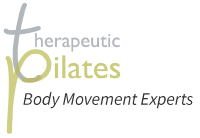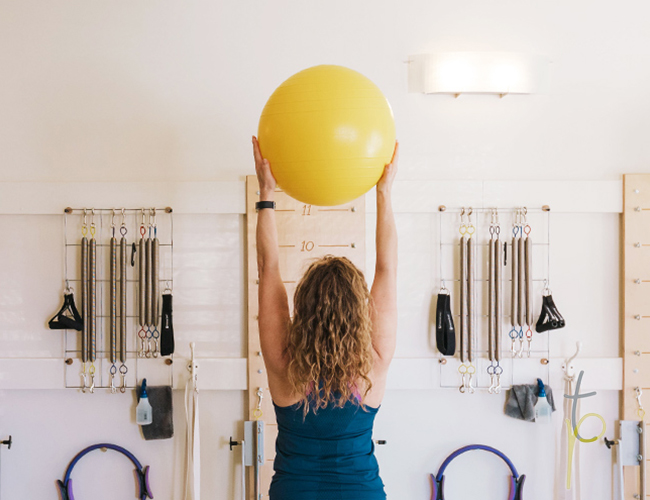- STOP squeezing your bum! At Therapeutic Pilates, we talk a lot about glute strength and “sit” bones. The sit bones are the bones you notice when you are sitting on a hard wooden chair or bench, these bones are part of your pelvis. You want to feel that you can stay balanced and tall on those sit bones when you are sitting. In standing, check to see if you’re squeezing your sit bones or tucking your tail under or between your legs. Instead, of these movements, see if you can relax the sit bones in standing, or maybe while washing the dishes or waiting in the bank line. Resist the urge to squeeze your bum when lying on your back and lifting your hips for Pilates, Yoga or other gym exercises. When using weights, don’t squeeze your bum to feel it working. Despite what you have been told “squeezing” only strengthens the muscles around the sphincter and at the sit bones not the giant glute muscles that make up your whole back side.
- MOVE your ribs. The ribs and mid-back are commonly a stiff part of the spine, if you learn to move your ribs and mid-back that will help promote more supple movement of the entire spine and take emphasis off the commonly overused low back. For this exercise, sit on a chair or lie on your back with your knees bent, feet flat on the floor. Cross your arms over your chest with hands or fingertips in your armpits. Draw shoulders down away from ears so you are squeezing your hands with your armpits. Slowly, turn your shoulders, ribs and head left to right. Inhale to turn to one side and exhale to come back to the middle. Inhale to go the other way and exhale to come back to centre. Keep your pelvis level on the floor or sit bones and bum still on the chair as you turn the ribs from side to side. Isolating the motion in the ribcage and thoracic spine (from the collar bones to above your belly button). Feel for muscles working under your armpits and down the sides of your body in your waist. Do 8-10 turns to each side. Make sure you’re not holding your breath while you do this exercise.
- BREATH! At Therapeutic Pilates, we often notice new clients holding their breath when they move, or when trying to activate their abdominals or core muscles. Please, please, please don’t hold your breath. Breathing helps to ease movement in general. It also helps to decrease pressure in, around and on your spine and back. Breathing in and out actually uses more abdominal muscles than holding your breath. The exercises listed above #2 and below #4 include breath cues to help you move better and feel more ab muscles working. We want you to breath and move when exercising and in everyday life.
- STRENGTHEN your deep core. This exercise is simple and small, protecting and stabilizing the back and strengthening the abdominals. Get on hands and knees on the floor or on a bed, ottoman or bench. Keep your knees under hips, wrists and elbows under shoulders, sit bones wide or think “happy puppy tail” to create a small arch in your low back. Stay tall on the arm bones and full between the shoulder blades, keeping your head in line with your spine. Inhale to expand the ribcage and exhale to pull the low belly in and wide (without squeezing the sit bones or tucking your tail). Inhale while getting strong on the L arm and exhale hovering the R hand off the floor or surface without dropping through the shoulders and keeping sit bones wide. Repeat the R hand hover each time you exhale, 5-8 times then switch sides. Get strong or tall on the R arm then exhale to hover the L hand. Can you feel your low belly pull in and wide as you hover the hand?
- Take PILATES. Weekly classes or private Pilates sessions is our recommendation. Regular Pilates keeps the body moving in all different directions, teaches you new tips and corrections for common exercises including the concepts mentioned in #1-4 of this list. Challenging the brain, nervous system and body with new information and movements. At Therapeutic Pilates, we teach the fundamentals of good movement and better posture to protect your spine, your back and all your joints to help you strengthen muscles to move better.
705-443-7785
[email protected]


Recent Comments